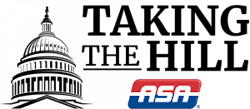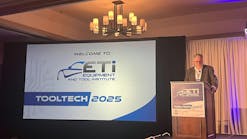Infrastructure Investment and Jobs Act includes new vehicle safety provisions

The week of Nov. 15, President Joe Biden signed the Infrastructure Investment and Jobs Act into law. The president’s signature was the culmination of months of negotiation over the bill, which totals $1.2 trillion and includes $550 billion in new money for the nation’s infrastructure. The legislation will make investments in traditional infrastructures, such as roads, bridges, and public transportation, as well as some non-traditional items, such as electric vehicle charging stations.
Important for mechanical and collision repair shops, the legislation includes $7.5 billion for a national network of electric vehicle (EV) charging stations – approximately half of what was proposed in Biden’s original plan. However, even with this smaller investment, the Biden Administration has not wavered from its goal of 500,000 new electric vehicle charging stations by the end of 2030.
According to a White House Fact Sheet, the electric vehicle charging stations funding will be focused on installing long-distance-oriented EV charging stations along highway corridors and charging stations in underserved communities. The administration will move forward with proposed regulations indicating how the EV charging station funds will be dispersed.
The new law also includes a number of provisions focused on standardizing vehicle safety standards. The legislation gives authority to the U.S. Department of Transportation (DOT) to issue requirements for the implementation of Advanced Driver-Assist Systems (ADAS) such as forward-collision warning, automated emergency braking, lane departure, and lane-keeping systems in new vehicles. However, the legislation does not set a specific time frame for when DOT is required to release these proposed rules.
The Automotive Service Association (ASA) supports updates to federal safety standards for motor vehicles as well as mandatory periodic motor vehicle safety inspections. ASA Chairman of the Board Fred Hules II commented on the new law: “ASA has been a longtime advocate of periodic motor vehicle safety inspections and believes these programs prove to benefit the motoring public. We encourage the U.S. Department of Transportation to also consider the importance of these vehicle inspections as part of the vehicle lifespan. Regular safety inspections by a qualified technician can identify and repair most safety issues arising from normal wear and tear on the vehicle and can help keep all road users safe.”
Additionally, the legislation updates active safety requirements for the front end of vehicles’ hoods and bumpers. These updates are designed to make vehicles safer for pedestrians in the event of a motor vehicle-pedestrian crash by increasing the distance between the bottom of a car’s hood and any hard part below it, such as the engine.
These updates may be similar to the European Union’s (EU) pedestrian impact standards, which were implemented as part of the EU goal to halve the number of serious injuries in crashes by 2030. According to the Infrastructure Investment and Jobs Act, Secretary of Transportation Pete Buttigieg has two years from the passage of the bill to issue a notice of potential updates and provide a report on the effects of these updates to the U.S. Congress.
The new legislation also includes requirements for the U.S. Department of Transportation to update Federal Motor Vehicle Safety Standard Number 108 (FMVSS108) establishing a performance-based standard for headlamps on vehicles and investigating the use of adaptive driving beam headlights for use in the United States. A recent study by the Insurance Institute for Highway Safety (IIHS) detailed on ASA’s Taking the Hill website here, showed that vehicles equipped with headlights with a “good” rating have a 19 percent lower nighttime crash rate than those with worse ratings.
Lastly, the legislation provides authority to the U.S. Department of Transportation to:
evaluate and implement requirements for Drunk Driving Prevention tools in vehicles,
require standard rear-seat occupancy reminders,
implement anti-rollaway technology for vehicles with keyless-ignition systems and
regulate automatic engine shutoff devices that would prevent the occurrence of carbon monoxide poisoning from vehicles.
The inclusion of all these safety standards in the Infrastructure Investment and Jobs Act shows a clear focus by the U.S. Congress and the Biden Administration to ensure that the vehicles of the future continue to be safer for all road users. As vehicles continue to become more technologically advanced, the opportunity for mandatory safety technology only increases.
The Automotive Service Association advances professionalism and excellence in the automotive repair industry through education, representation and member services. ASA is transitioning to a new and innovative association model leveraging its expansive history to create a single, unified industry voice. To learn more about the new and improved ASA, please visit ASAshop.org or call (817) 514-2901.
